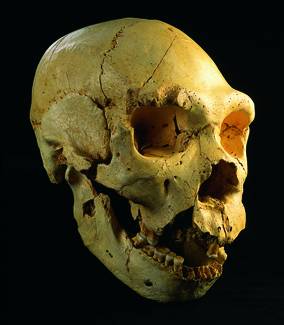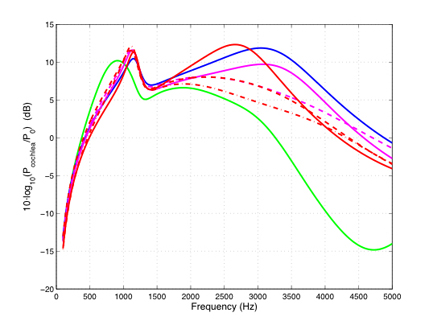


Pleistocene Hearing
Ignacio Martínez Mendizábal, imartinezm@isciii.es
Departamento de Geología, Universidad de Alcalá, Edificio de Ciencias,
Campus Universitario, 28871 Alcalá de Henares Spain; and
Centro de Investigacion (UCM-ISCIII) sobre la Evolucion y Comportamiento Humanos,
c/Sinesio Delgado, 4, 28029 Madrid, Spain
R. Quam
Division of Anthropology, American Museum of Natural History
Central Park West at 79th St., New York, NY 10024-5192, USA; and
Centro de Investigacion (UCM-ISCIII) sobre la Evolucion y Comportamiento Humanos,
c/Sinesio Delgado, 4, 28029 Madrid, Spain
M. Rosa, P. Jarabo
Departamento de Teoría de la Señal y Comunicaciones,
Universidad de Alcalá , Escuela Politécnica, Campus Universitario,
28871 Alcalá de Henares, Spain
C. Lorenzo
Área de Prehistoria, Universitat Rovira i Virgili,
Facultat de Lletres, Plaça Imperial Tarraco 1, 43005 Tarragona, Spain; and
Centro de Investigacion (UCM-ISCIII) sobre la Evolucion y Comportamiento Humanos,
c/Sinesio Delgado, 4, 28029 Madrid, Spain
J.L. Arsuaga
Departamento de Paleontología, Universidad Complutense de Madrid,
Facultad de Ciencias Geológicas, Ciudad Universitaria s/n, 28040 Madrid, Spain; and
Centro de Investigacion (UCM-ISCIII) sobre la Evolucion y Comportamiento Humanos,
c/Sinesio Delgado, 4, 28029 Madrid, Spain
Popular version of paper 4pAAa12
"Auditory capacities of human fossils: A new approach to the origin of speech." Humanos,
Delivered Thursday July 3, 2008 at 6:20 p.m. in Room 242B
as part of the symposium titled Archaeological Acoustics (AA02)
Human hearing differs from that of chimpanzees and other primate taxa in maintaining a widened bandwidth of heightened sensitivity from 2-4 kHz, a region that contains relevant acoustic information in spoken language. Comparative analysis of primate audiograms suggests that this represents a derived feature in modern humans, and knowledge of the auditory capacities in our human fossil ancestors could shed light on when this human pattern emerged during the course of our evolutionary history. Although studying auditory capacities in fossil species is a major challenge, the advent and widespread application of CT-based analyses has made it possible for the first time.
We have relied on a comprehensive model, using virtual 3D CT reconstructions of the outer and middle ear , to study the auditory capacities in five fossil human specimens from the Middle Pleistocene site of the Sima de los Huesos in the Sierra de Atapuerca of Spain (Figure 1) . This model has been shown to provide reliable results up to at least 5 kHz in modern humans. Our results demonstrate that the Atapuerca hominins had a widened bandwidth of heightened sensitivity between 1-5 kHz, suggesting that they already had auditory capacities similar to those of living humans in this frequency range (Figure 2). Because the Atapuerca hominins are not on the direct evolutionary line that gave rise to our own species, but form part of the Neandertal evolutionary lineage, it is conceivable that this condition was already present in the last common ancestor of modern humans and Neandertals. Recent dating of the Sima de los Huesos site indicates that the human fossils are at least 530,000 years old, providing a minimum age for the appearance of the modern human auditory pattern in the fossil record.
Although t he study of audition is an indirect approach to the question of speech capacity in fossil specimens, a consideration of the capacity of the outer and middle ears as communication channels may help clarify the relationship between sound production and sound perception. Channel capacity is an indication of the amount of information that can be transmitted without any loss, with a wider channel capacity capable of transmitting more information. If bandwidth is taken as a proxy for channel capacity, the widened bandwidth of heightened sensitivity found in modern humans and the Atapuerca hominins would correspond to a greater channel capacity and would allow for the transmission of a larger quantity of information. Importantly, the frequency range in which this widened bandwidth occurs overlaps the range of frequencies emitted during modern human spoken language.
Interestingly, the recent discovery that Neandertals share with modern humans two derived substitutions in the FOXP2 gene offers tantalizing new evidence for the possible presence of spoken language in Neandertals. Certain mutations in this gene are known to produce speech and language disorders in living humans, indicating it is directly implicated in the development of speech and language At the same time, the beginnings of human speech have recently been suggested to date to the origin of the genus Homo. It is important to point out that the precise nature of this verbal communication in fossil hominins is not known, but need not be equivalent in syntax, linguistic flexibility or cognitive complexity to present day human spoken language. Thus, the implications drawn from the study of auditory capacities based on the Atapuerca hominins are consistent with the results of recent studies into the evolution of language and comprise one component in an emerging consensus in favor of the presence of some form of spoken language in the genus Homo prior to the appearance of our own species, H. sapiens.

Figure 1. Cranium 5 from the Sima de los Huesos site. This specimen dates to at least 530,000 years ago, is attributed to the species Homo heidelbergensis and is considered to represent an ancestor of the later in time Neandertals.

Figure 2. Model results for sound power transmission through the outer and middle ear in the Atapuerca SH hominins, modern humans and the chimpanzee. Sound power (dB) is measured at the entrance to the cochlea relative to P 0=10 -18W for an incident plane wave intensity of 10 -12 W/m 2. Note that points higher on the curve indicate a greater transmission of the sound energy through the outer and middle ears and imply a greater auditory sensitivity. Solid blue line, modern human; solid green line, chimpanzee; solid red line, AT-84; dashed red line, AT-4103; dashed-dotted red line, Cranium 5; solid magenta line, AT-421; dashed magenta line, AT-1907.